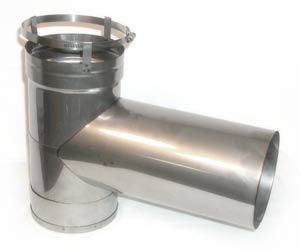First of all just found this forum... Thanks in advance for any assistance!
I did a quick search but found nothing related. Here's my problem.
I have a Catalytic wood stove (Consolidated dutchwest) and love it. It lives in an unfinished basement. It is vented with 6 in stove pipe up to 6' then a 4" horizontal to a clay thimble. Through a masonry block wall into a clay lined 8" X 8" masonry chimney... Chimney extends about 35' from thimble to outlet.
The stove works great, but the flue gases are condensing in the chimney - running down the sides of the flue and eventually pooling in the bottom and leaching through the concrete block wall back into the basement... bringing with it the smell of creosote. My wife has finally forbidden me to use the stove.
What can I do? I'm researching stainless steel liners. will this solve the problem? I'm entertaining a flexible 6" liner with pour in insulation. If I do this how do I terminate the liner at the bottom? I hesitate to use a T- afraid that any condensatate will simply drip out the bottom and leach into the basement still. Or will the insulation be sufficient to carry the gases before they condense?
Can I flex the pipe sufficiently to make the turn from a vertical 8" X 8" flue to a 8" round thimble?
Any and all advise is welcomed.
I did a quick search but found nothing related. Here's my problem.
I have a Catalytic wood stove (Consolidated dutchwest) and love it. It lives in an unfinished basement. It is vented with 6 in stove pipe up to 6' then a 4" horizontal to a clay thimble. Through a masonry block wall into a clay lined 8" X 8" masonry chimney... Chimney extends about 35' from thimble to outlet.
The stove works great, but the flue gases are condensing in the chimney - running down the sides of the flue and eventually pooling in the bottom and leaching through the concrete block wall back into the basement... bringing with it the smell of creosote. My wife has finally forbidden me to use the stove.
What can I do? I'm researching stainless steel liners. will this solve the problem? I'm entertaining a flexible 6" liner with pour in insulation. If I do this how do I terminate the liner at the bottom? I hesitate to use a T- afraid that any condensatate will simply drip out the bottom and leach into the basement still. Or will the insulation be sufficient to carry the gases before they condense?
Can I flex the pipe sufficiently to make the turn from a vertical 8" X 8" flue to a 8" round thimble?
Any and all advise is welcomed.


